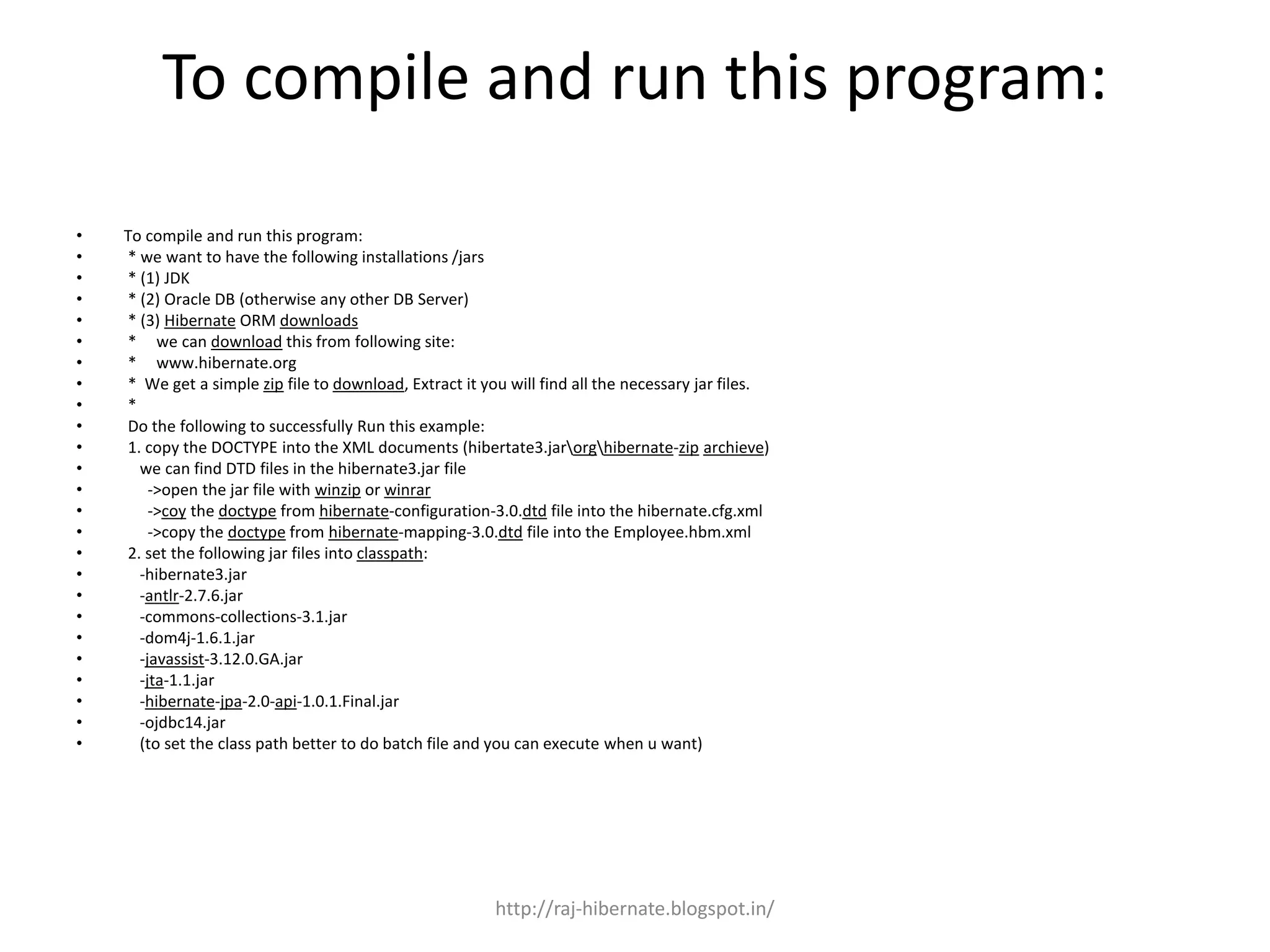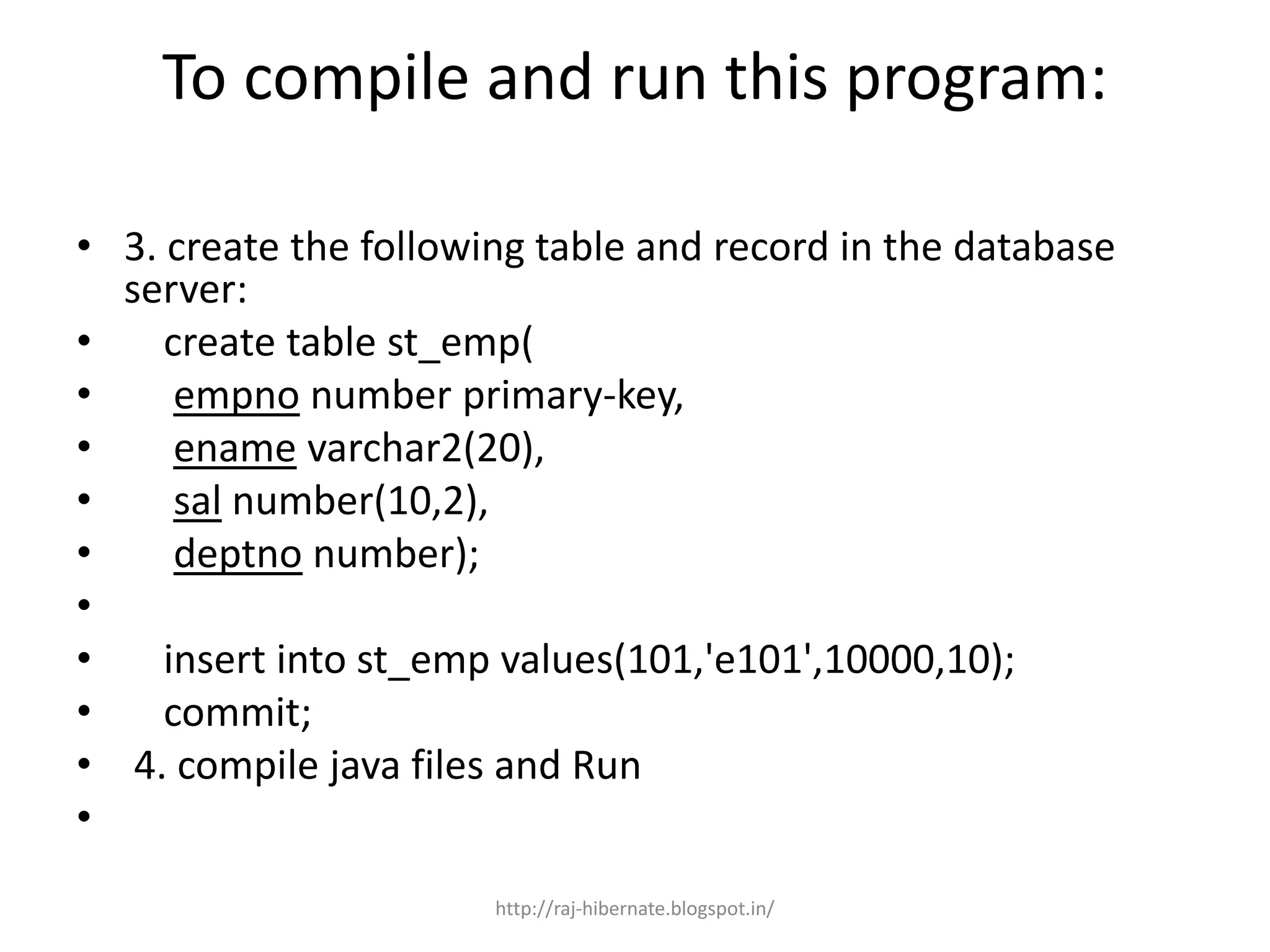This document provides an introduction and overview of Hibernate, an object-relational mapping tool for Java. It discusses what ORM is, why it is used, and defines key Hibernate concepts like entities, mapping files, configuration files, and the session factory. It also provides an example of creating a basic Hibernate project with an Employee entity class, mapping file, configuration file, and test case to load an employee object by ID from the database.


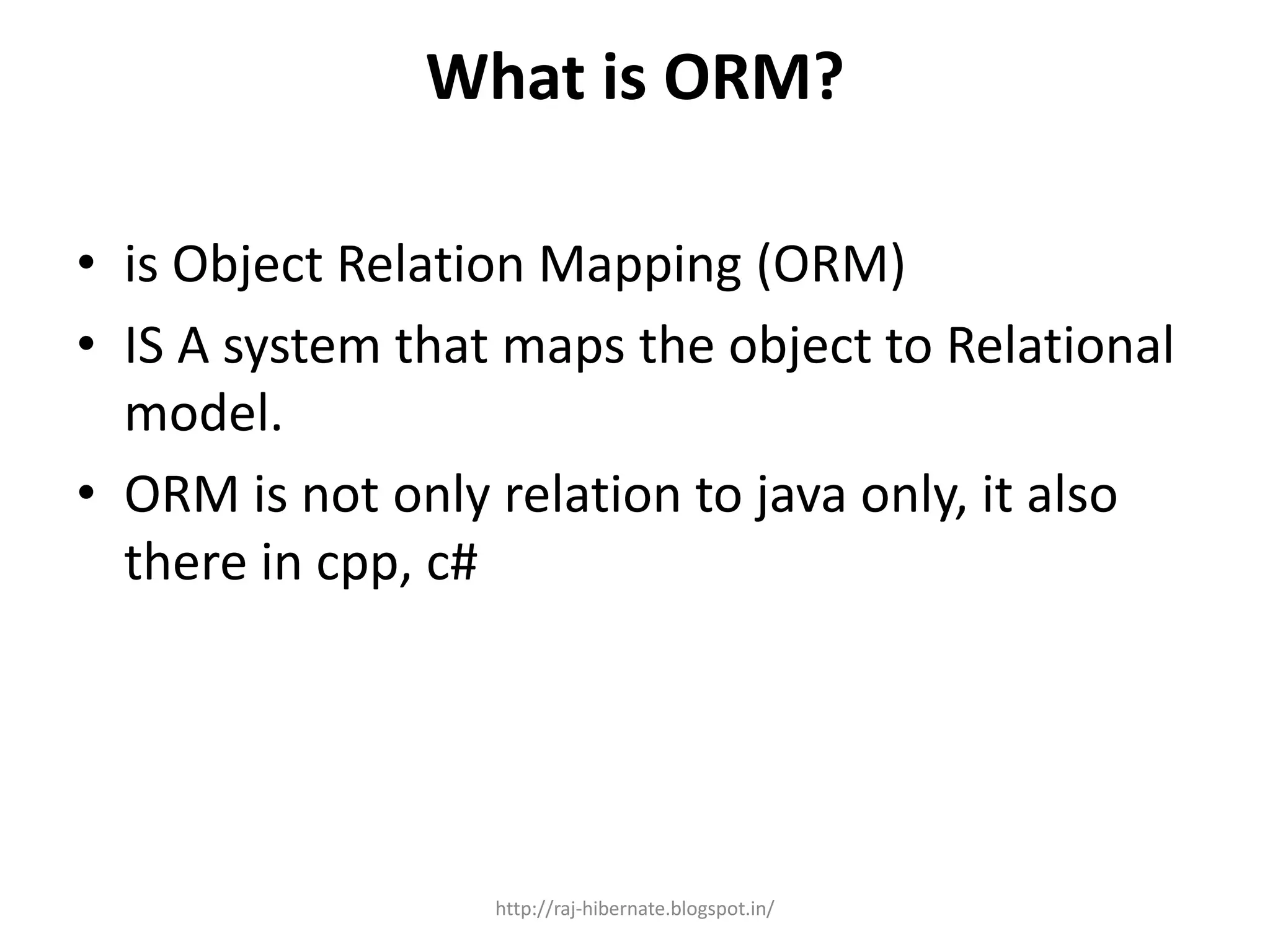
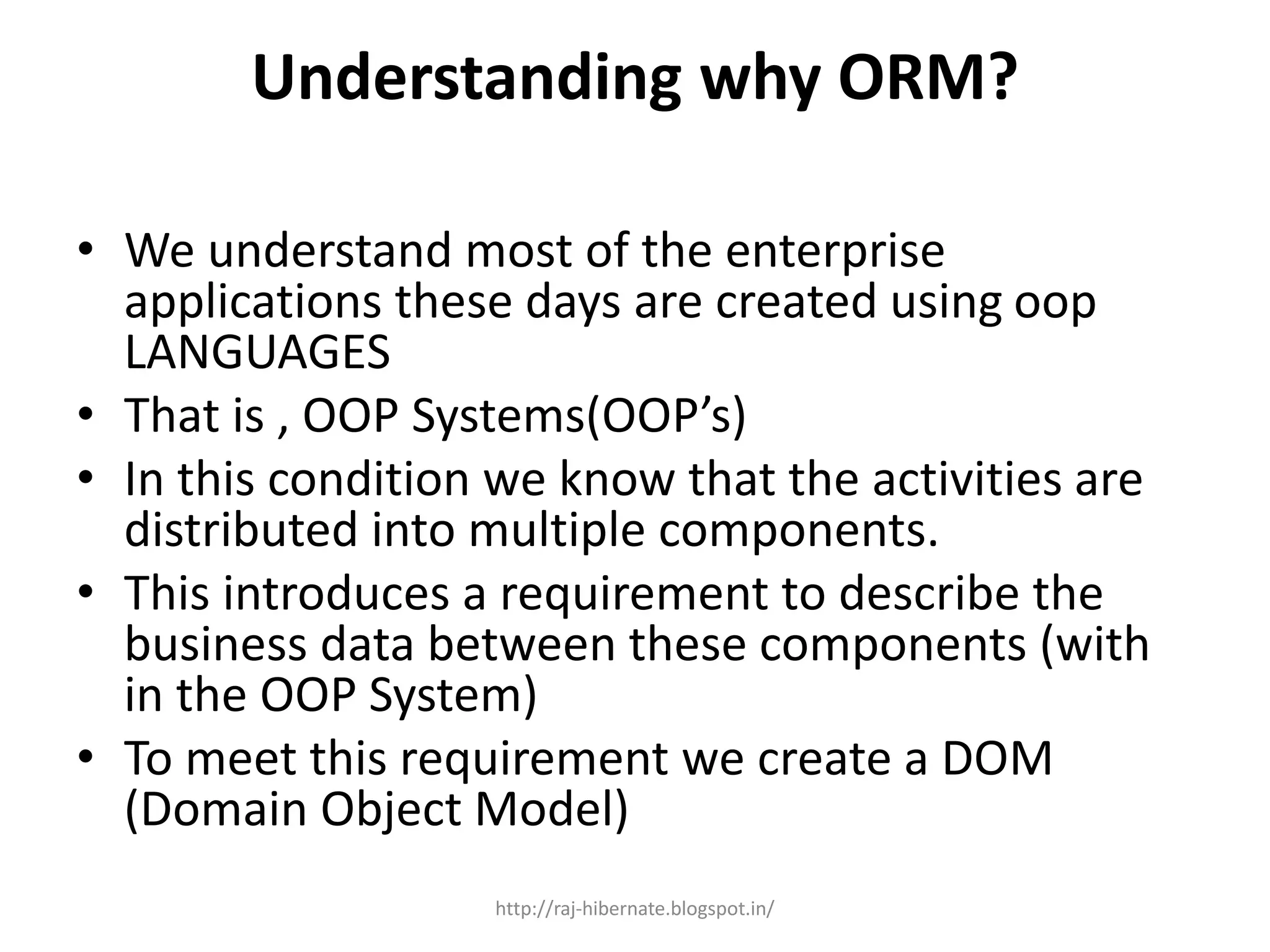
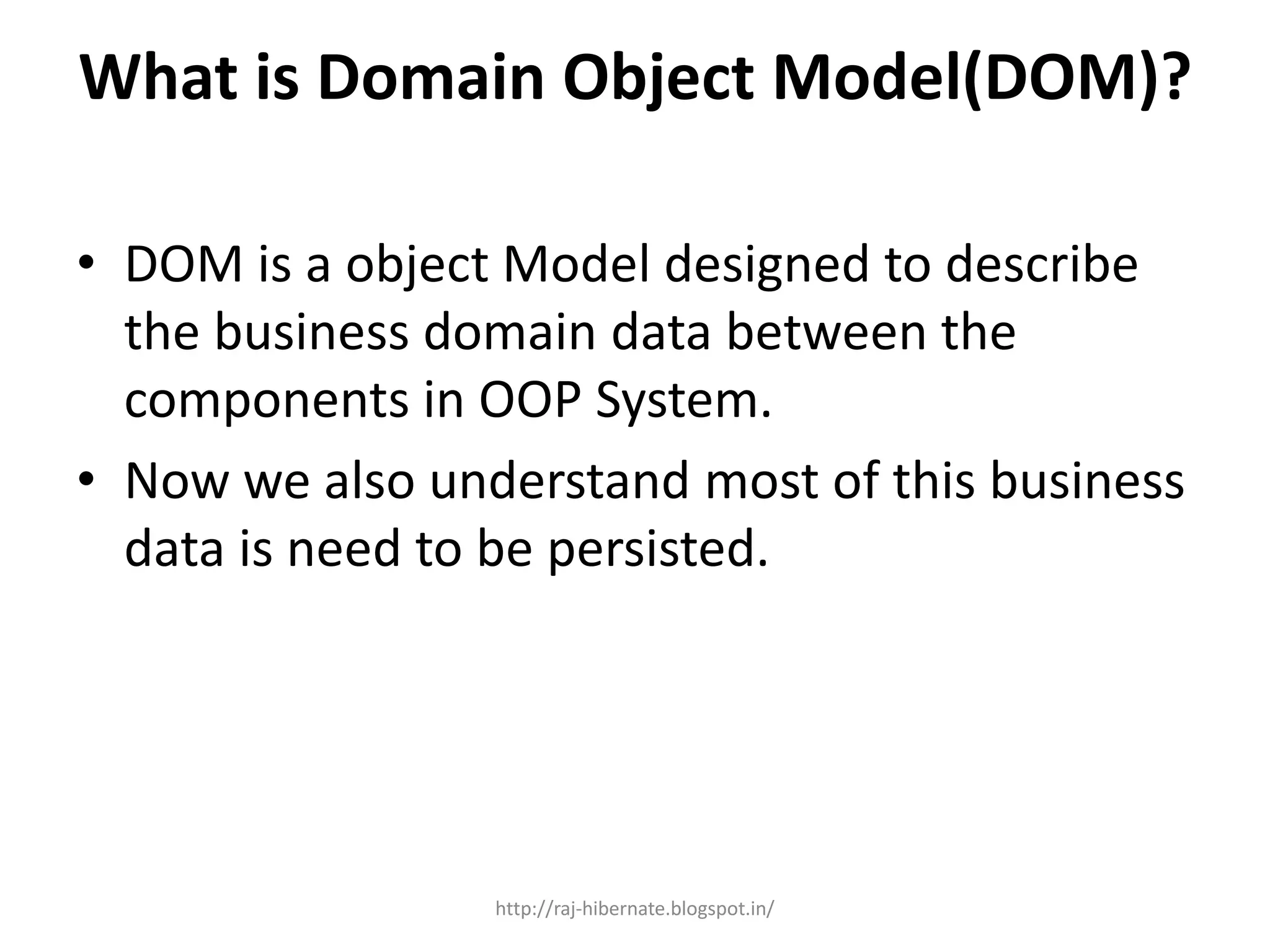
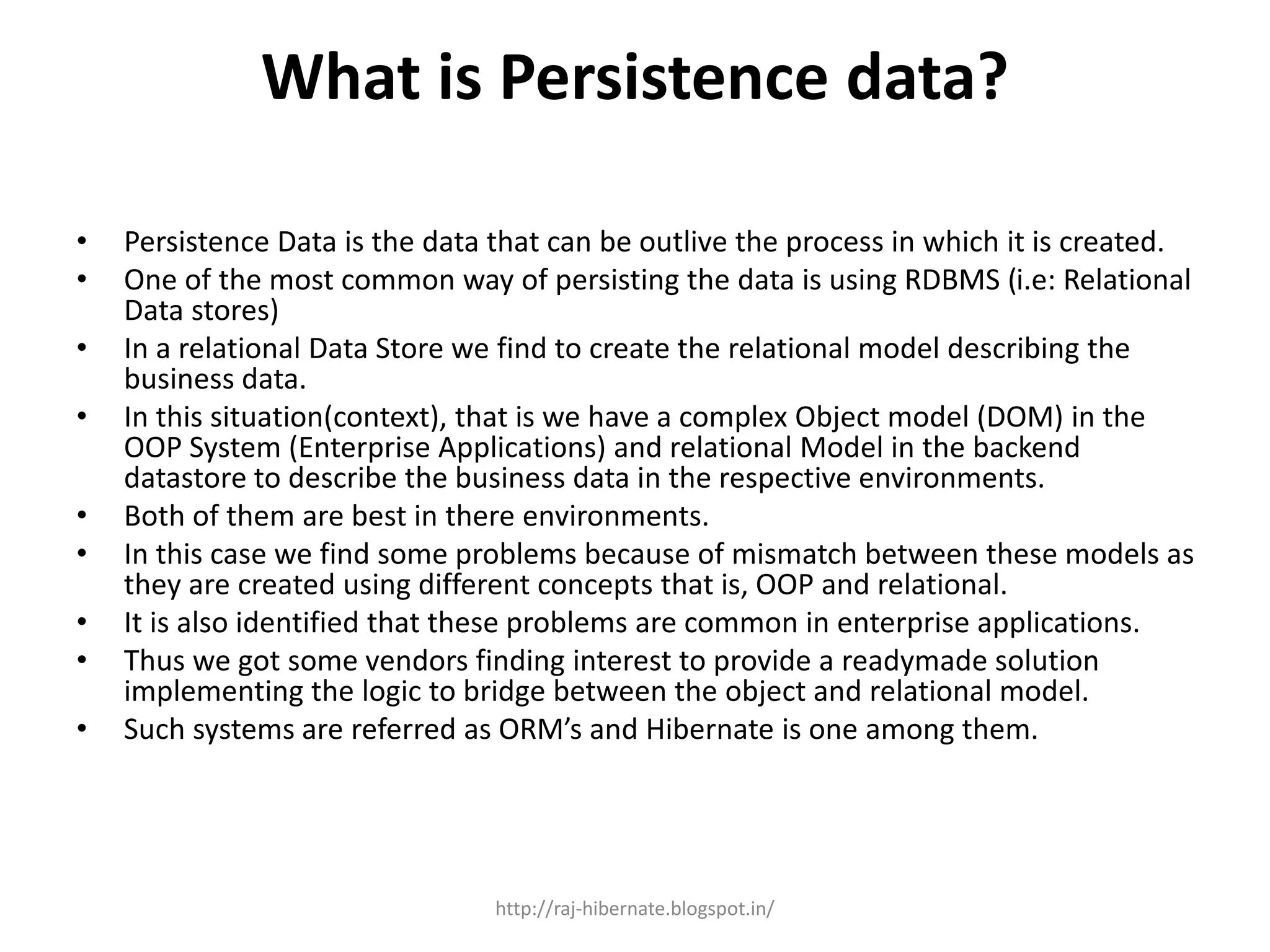
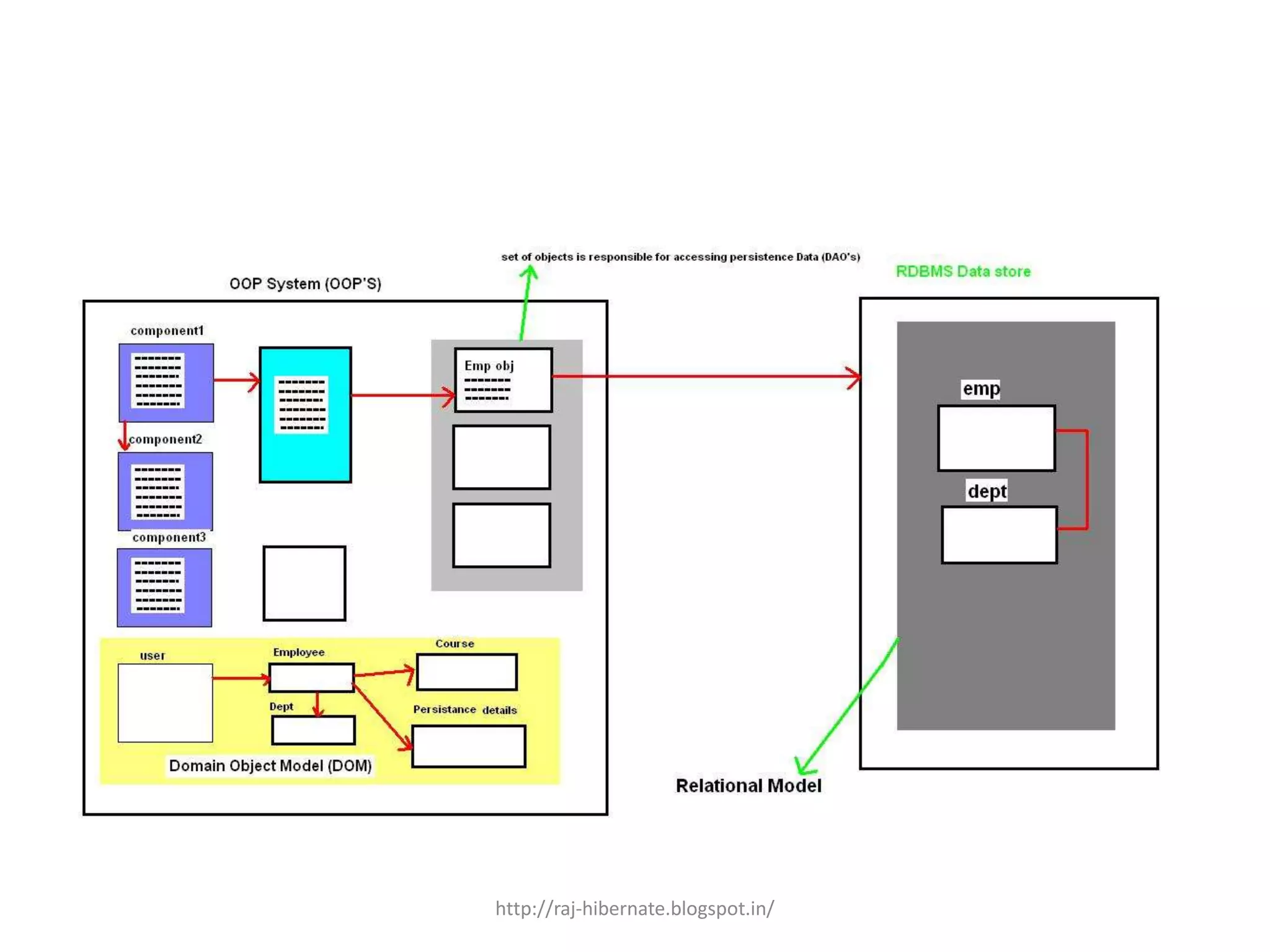
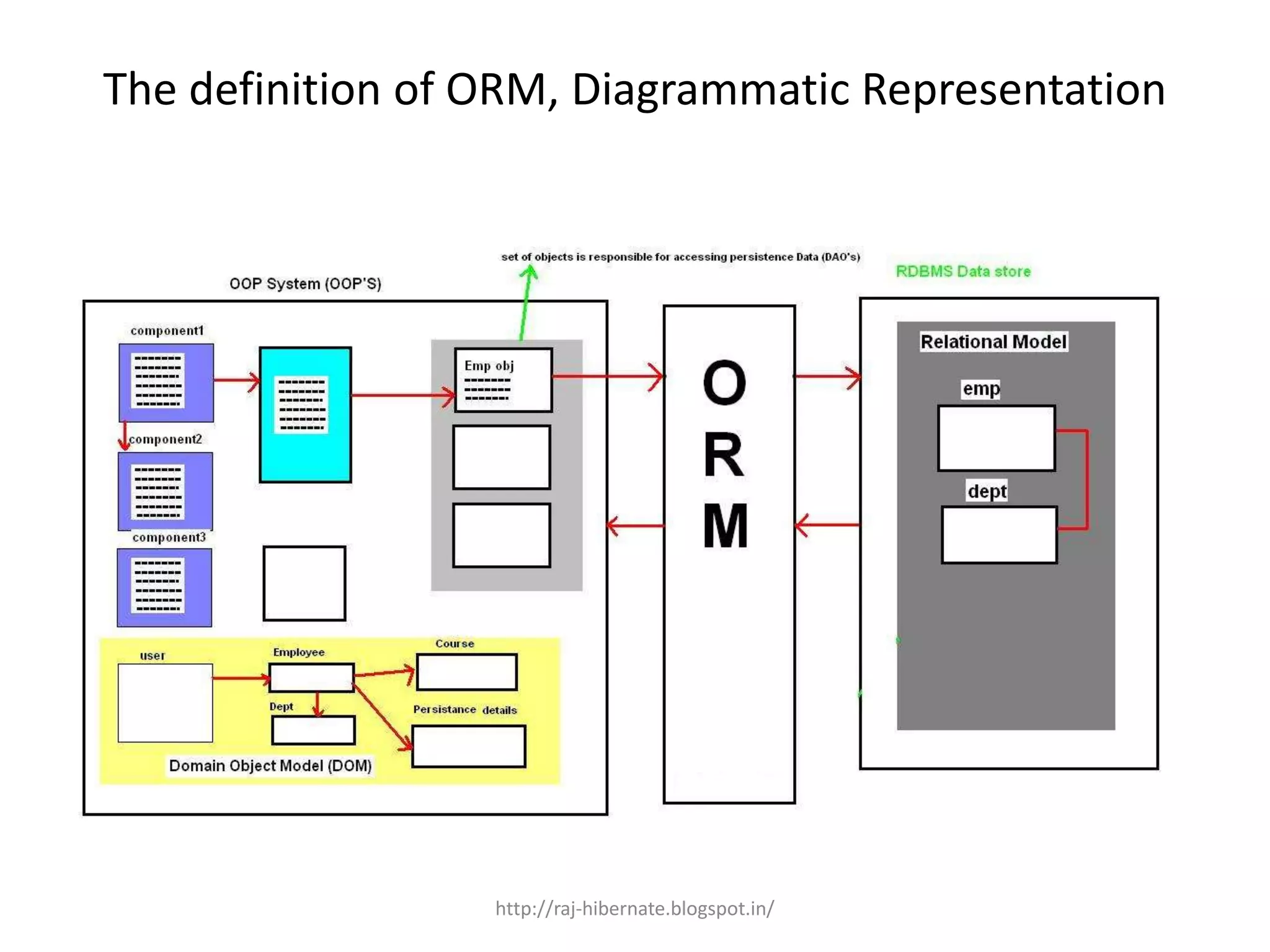
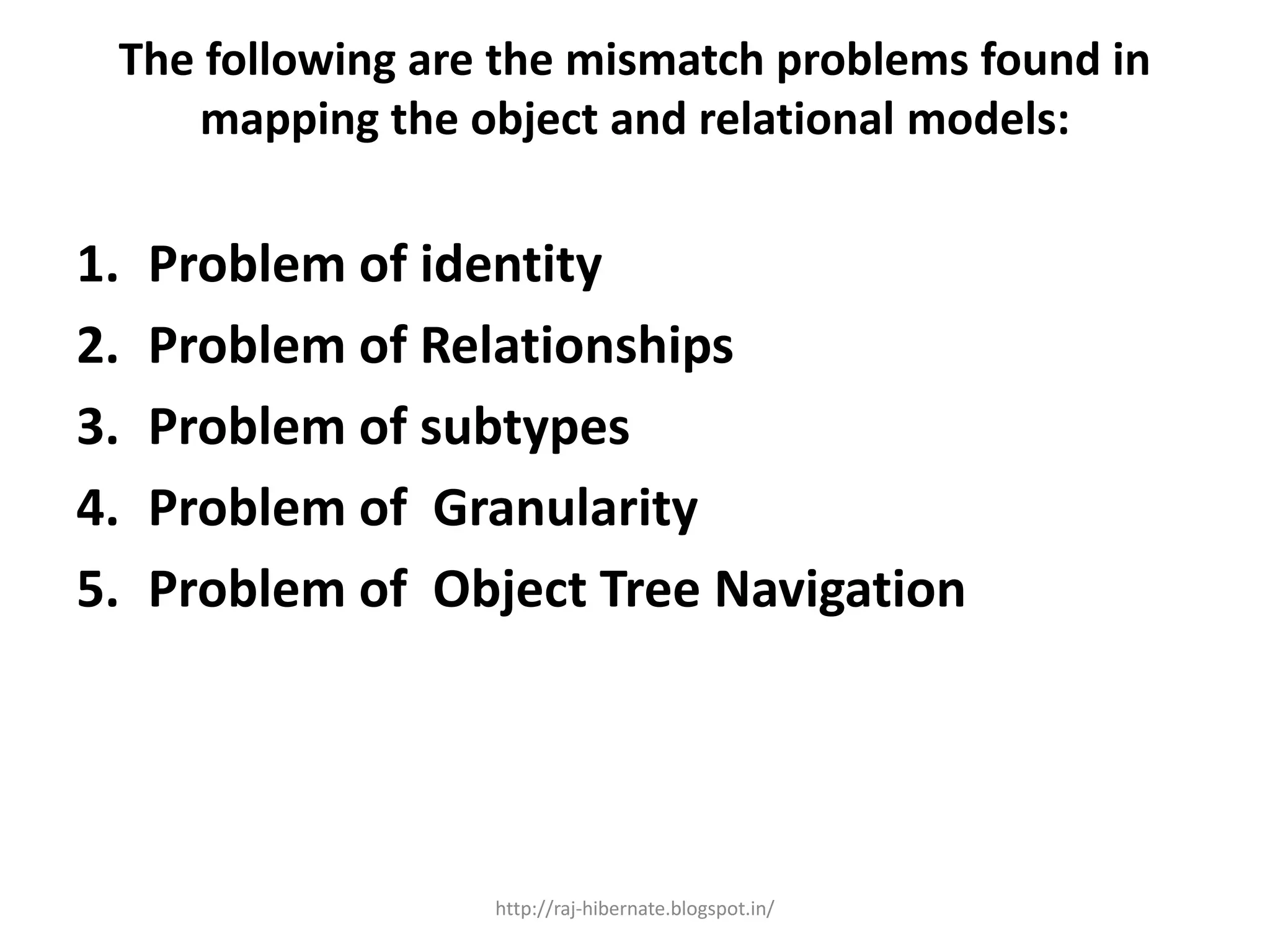
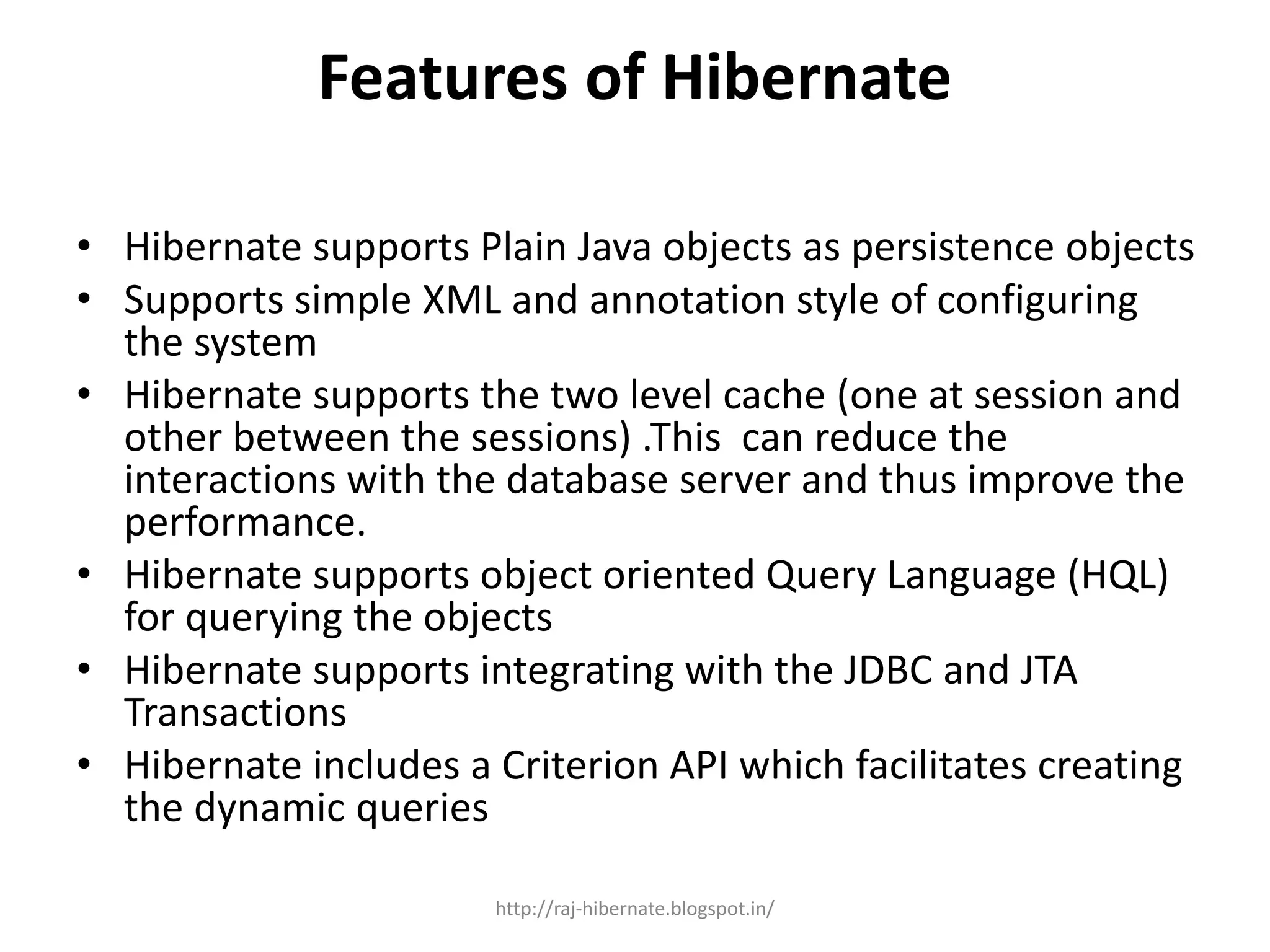
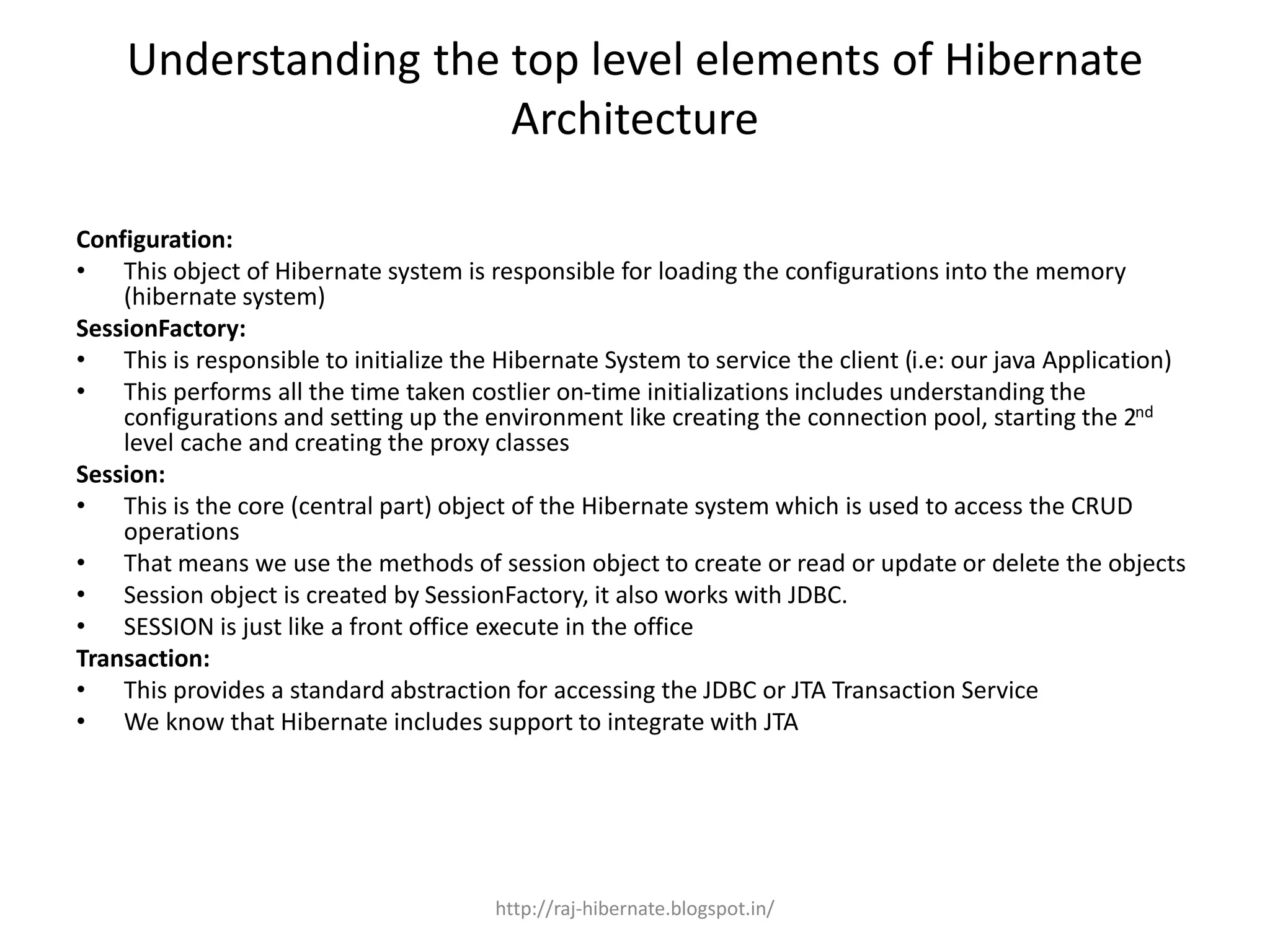


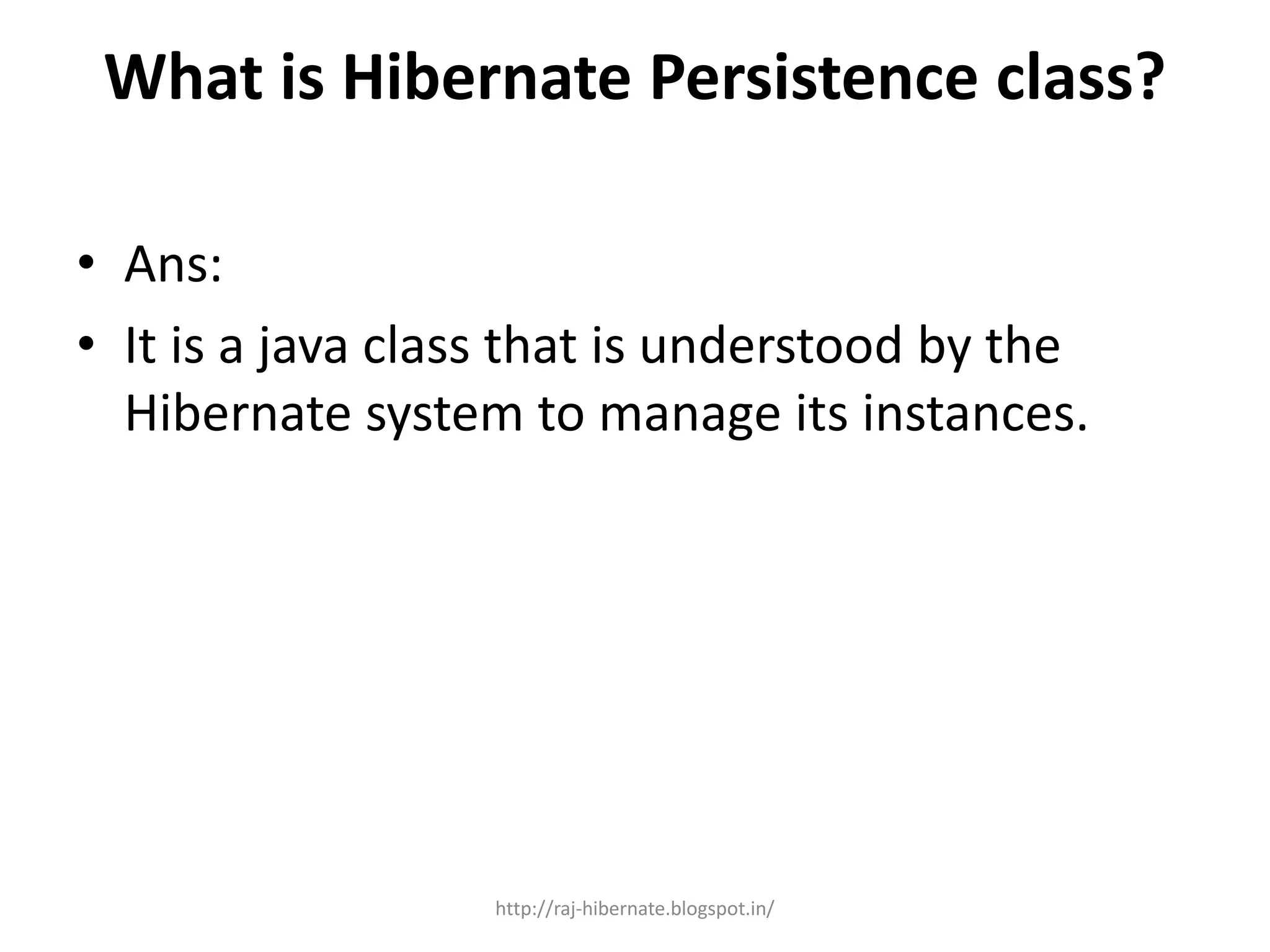
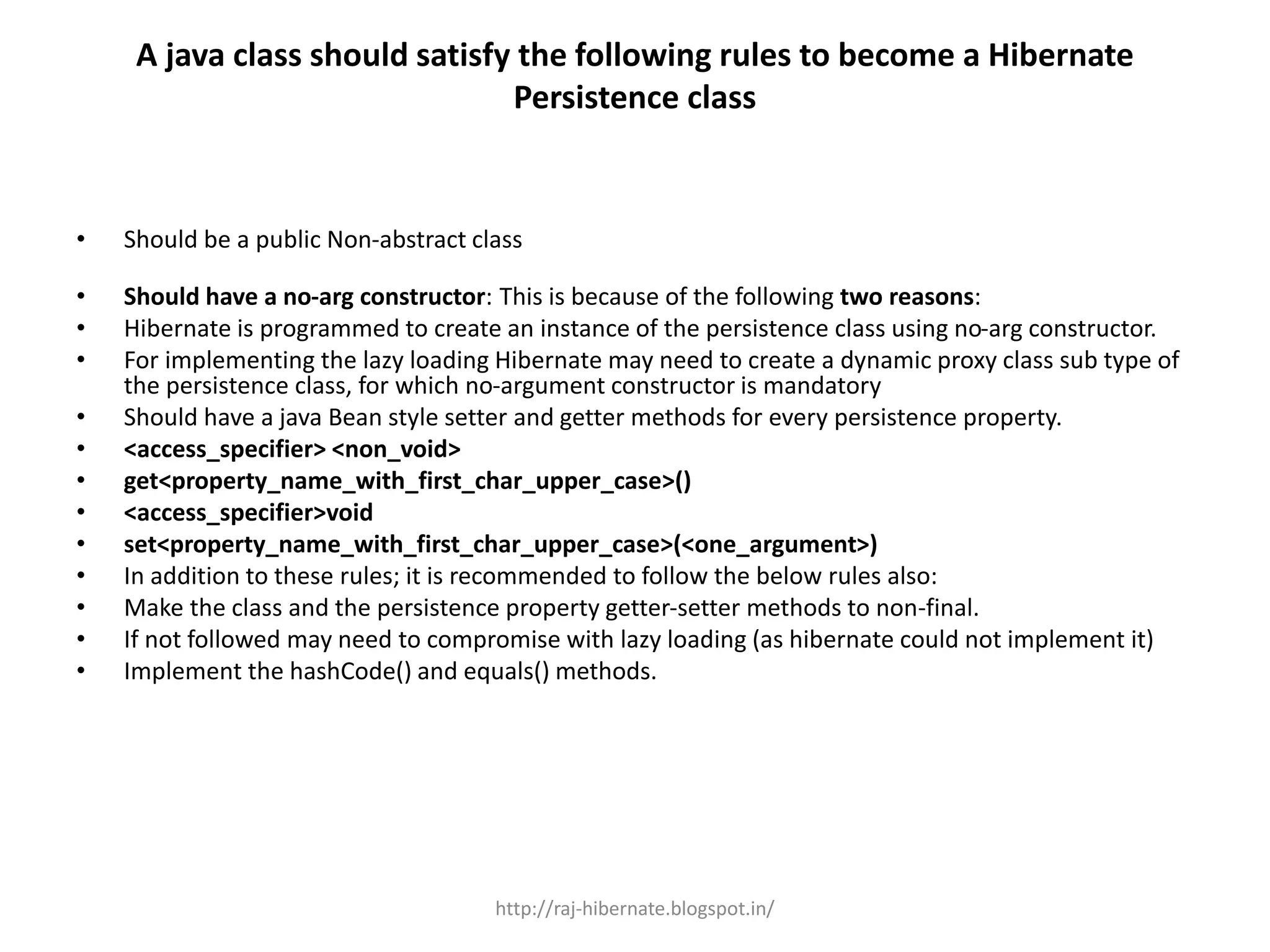
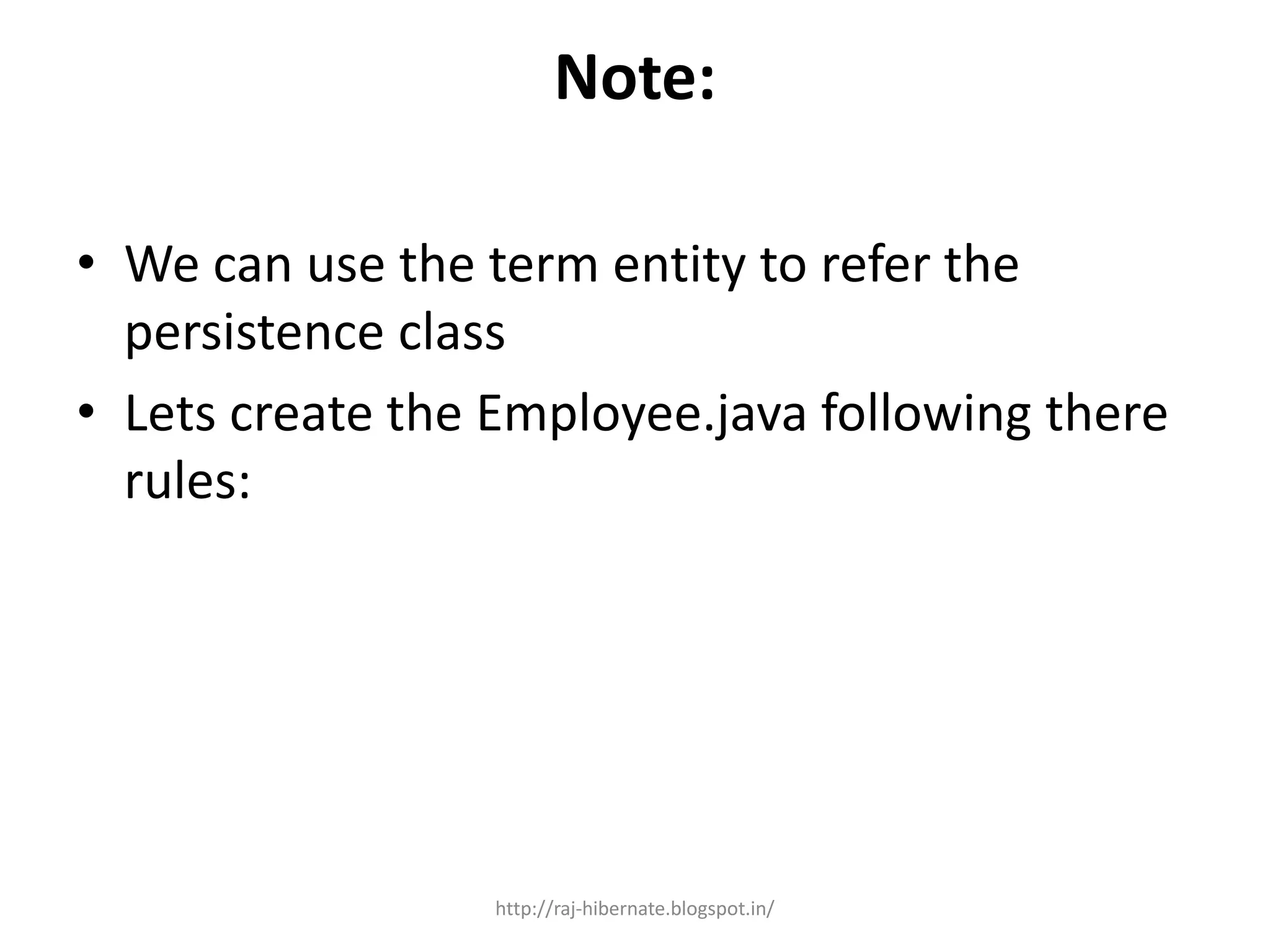

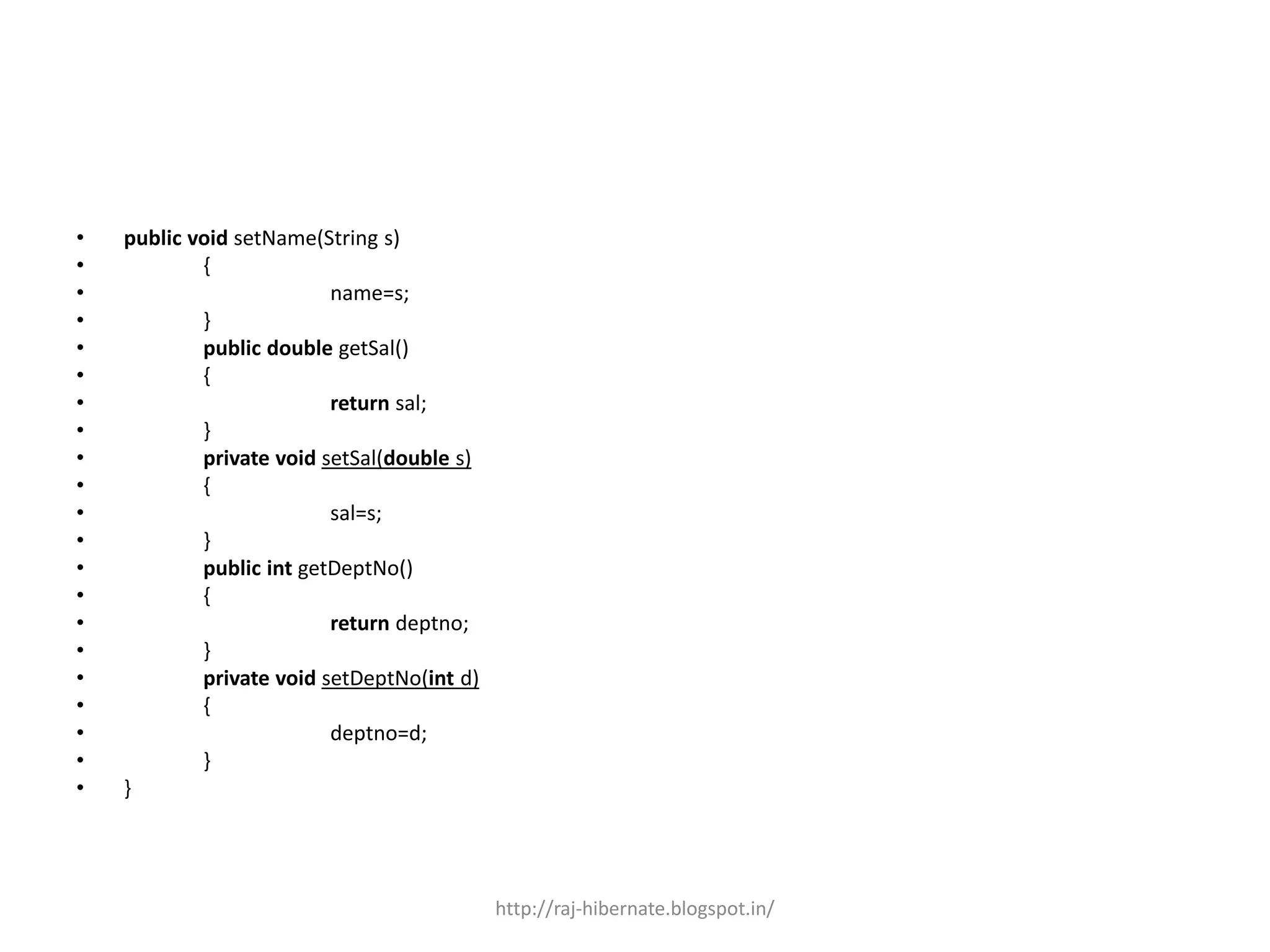
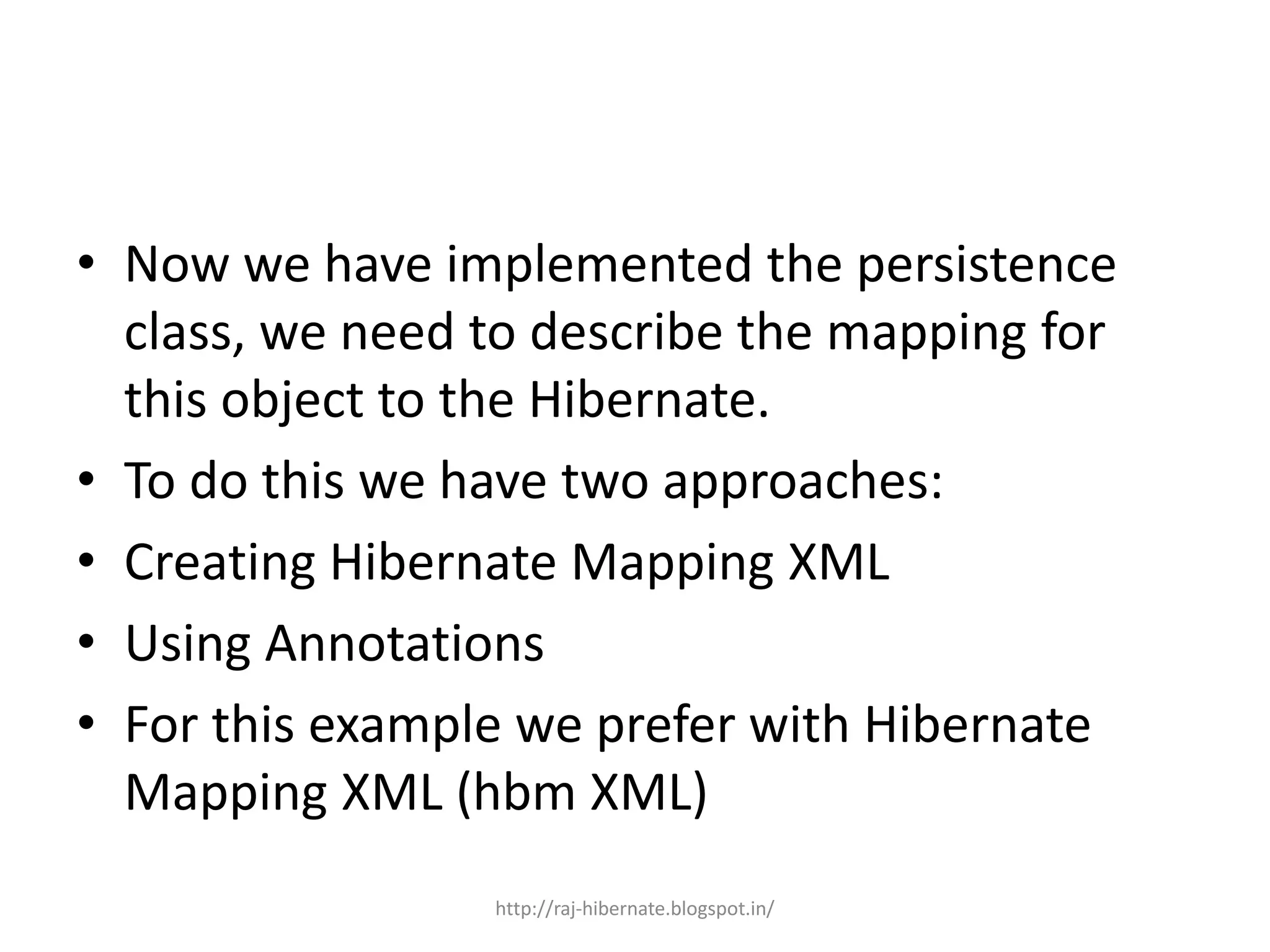
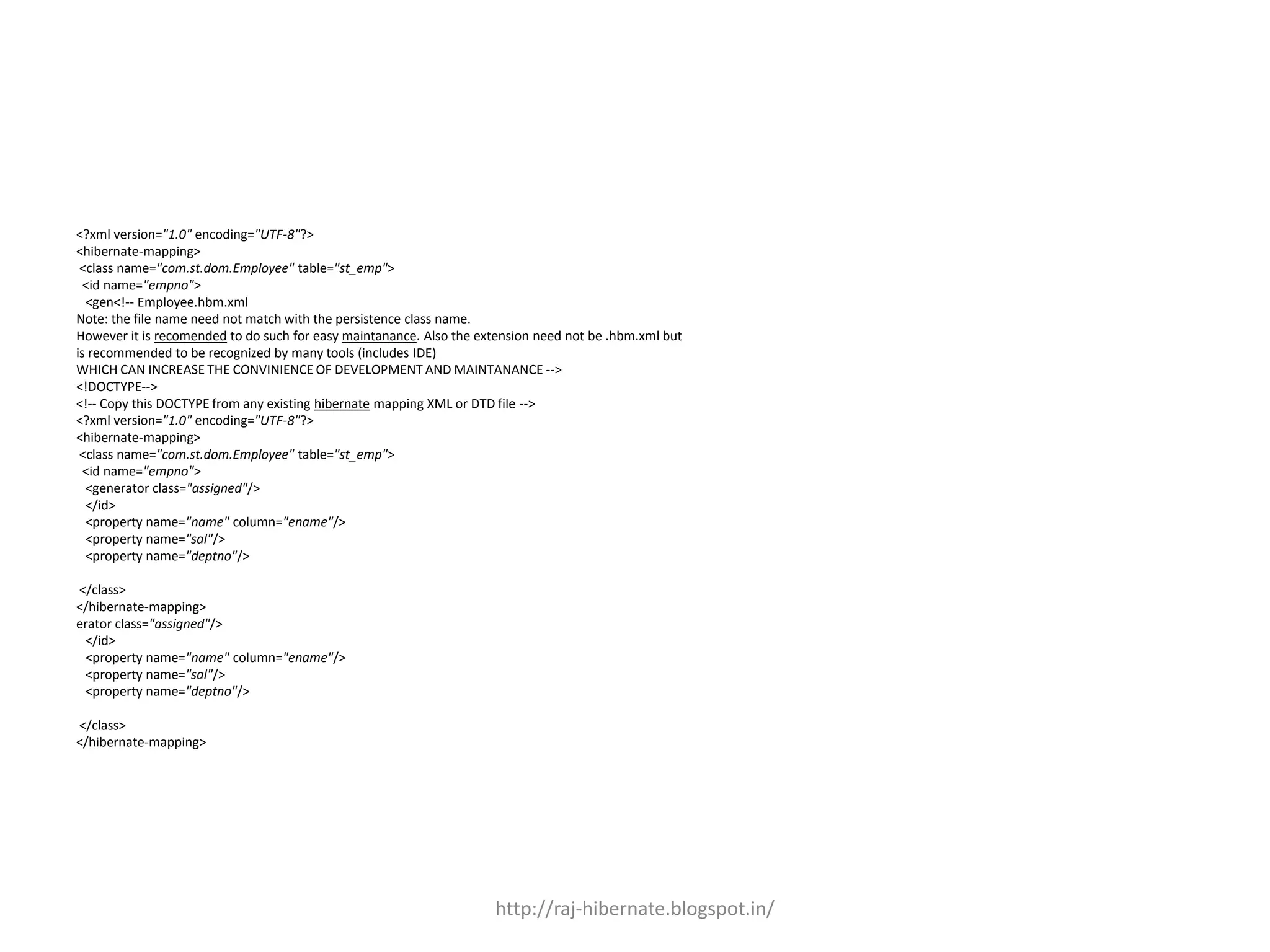
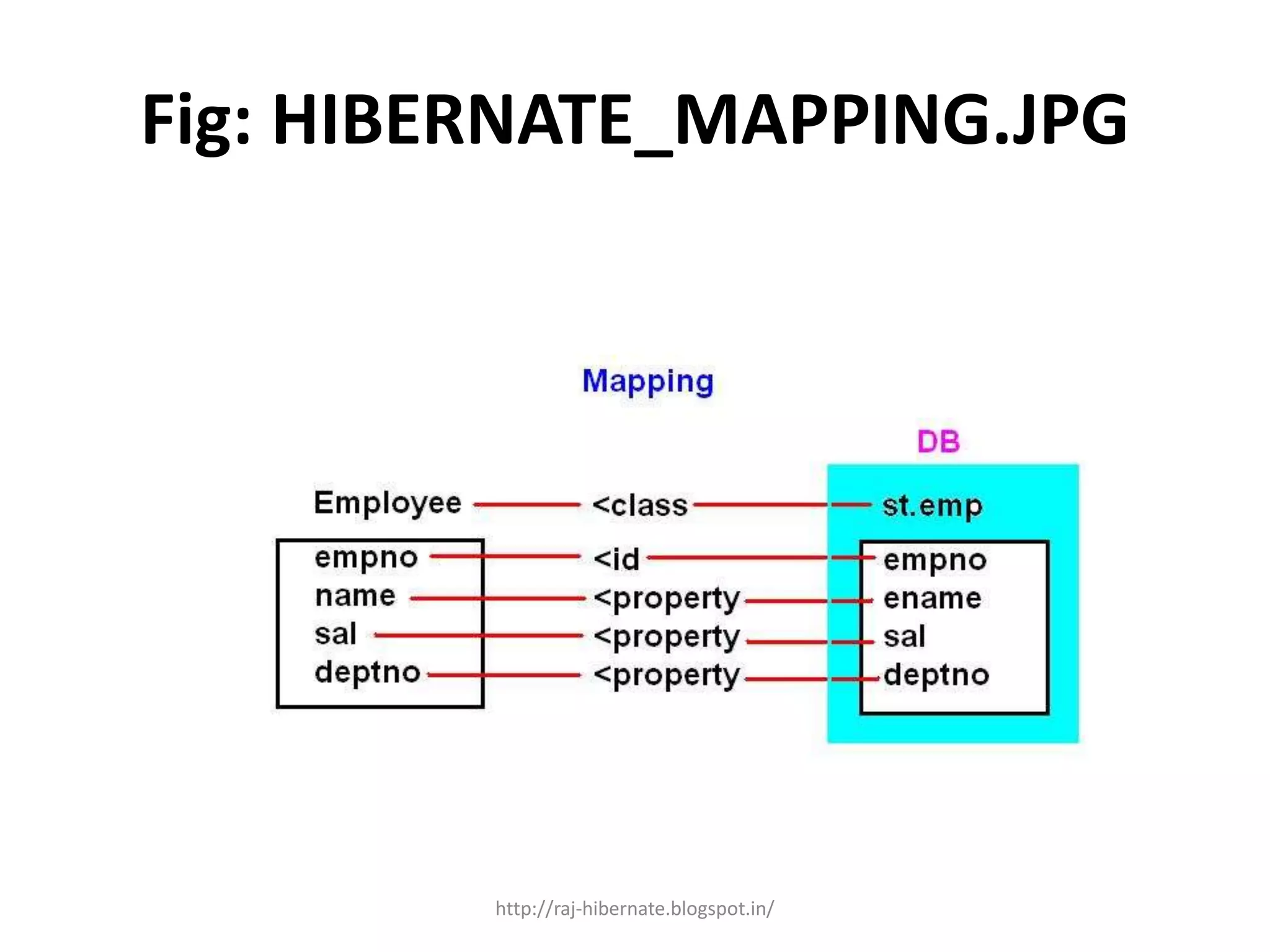
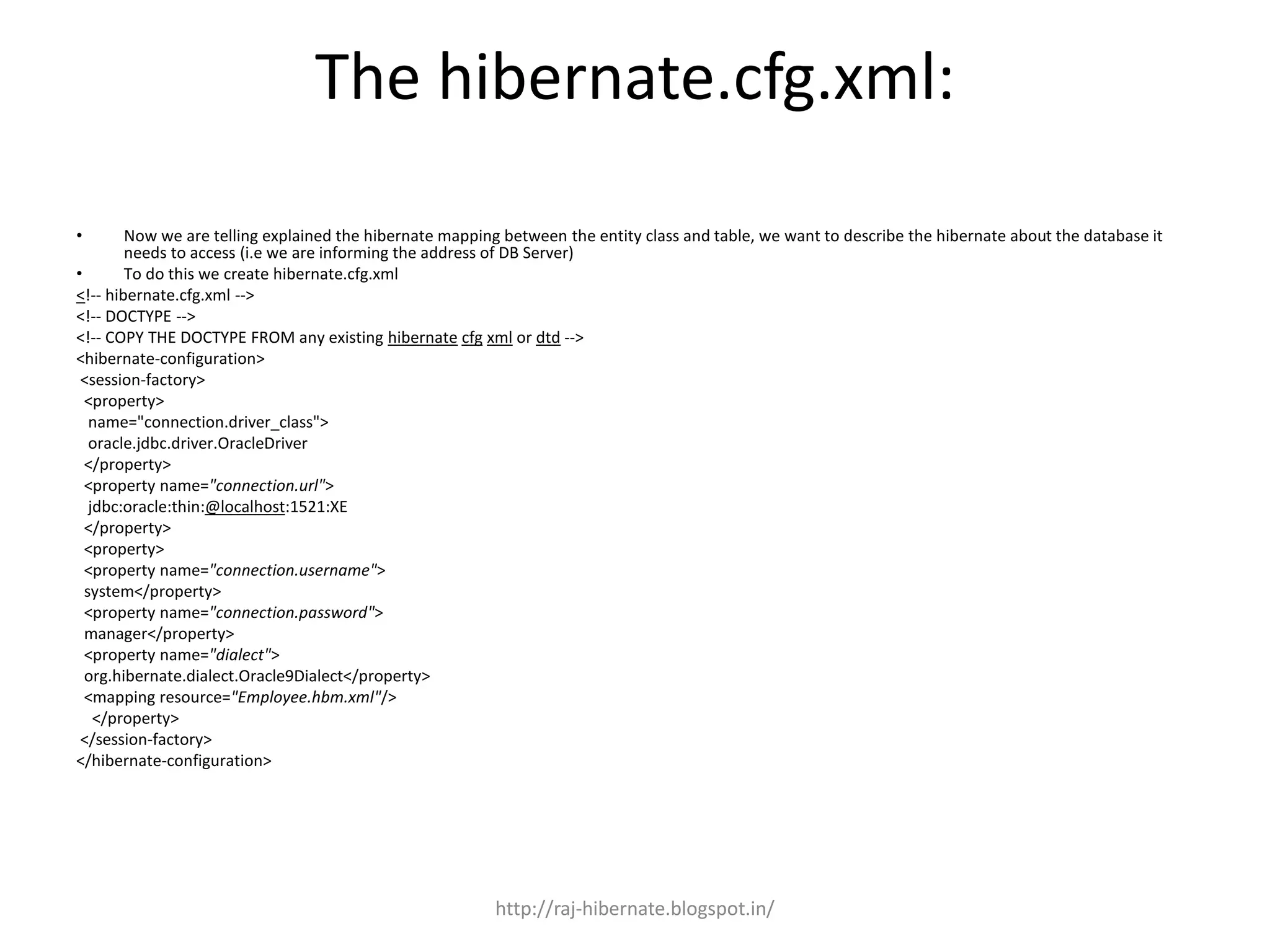
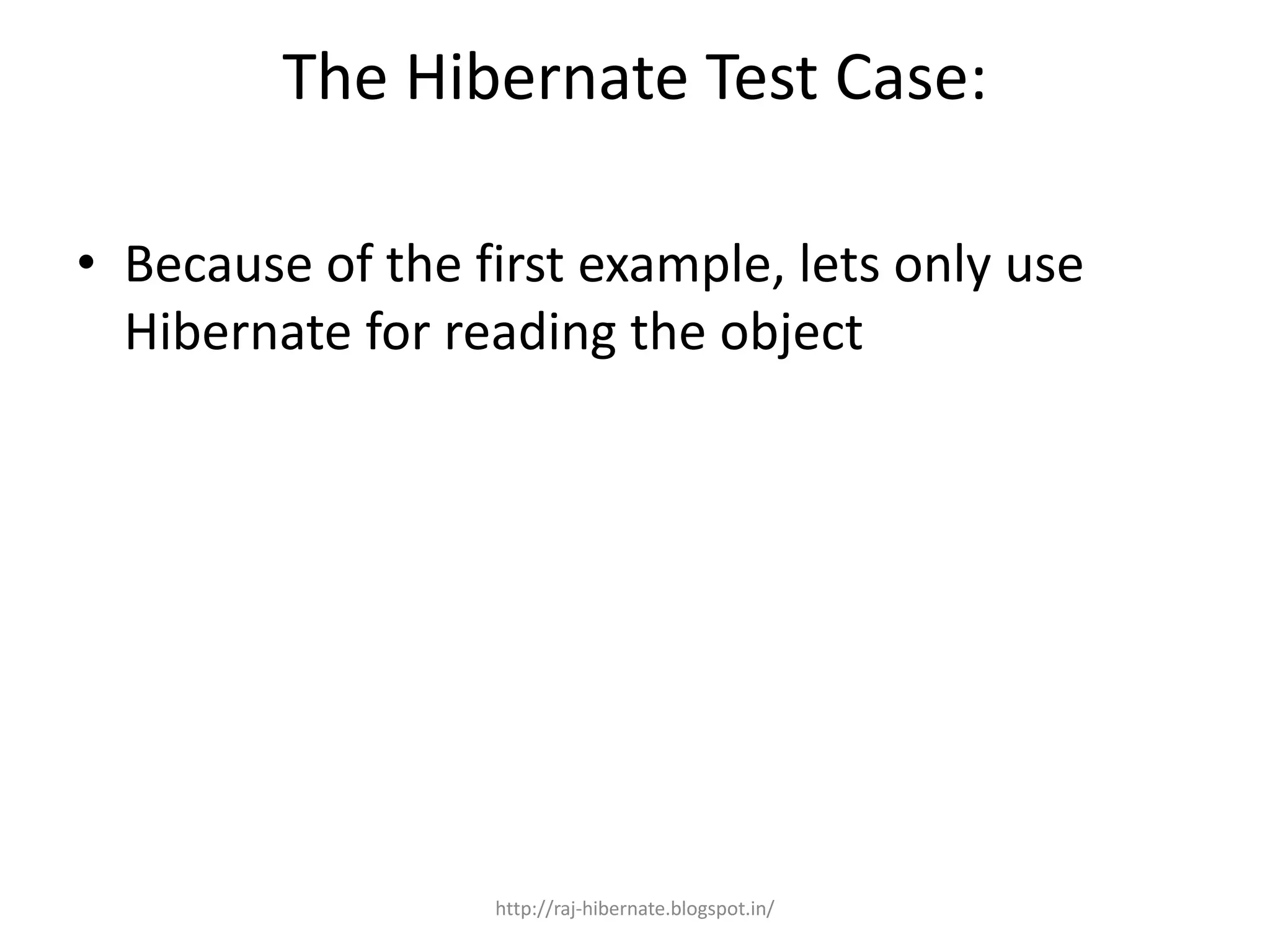
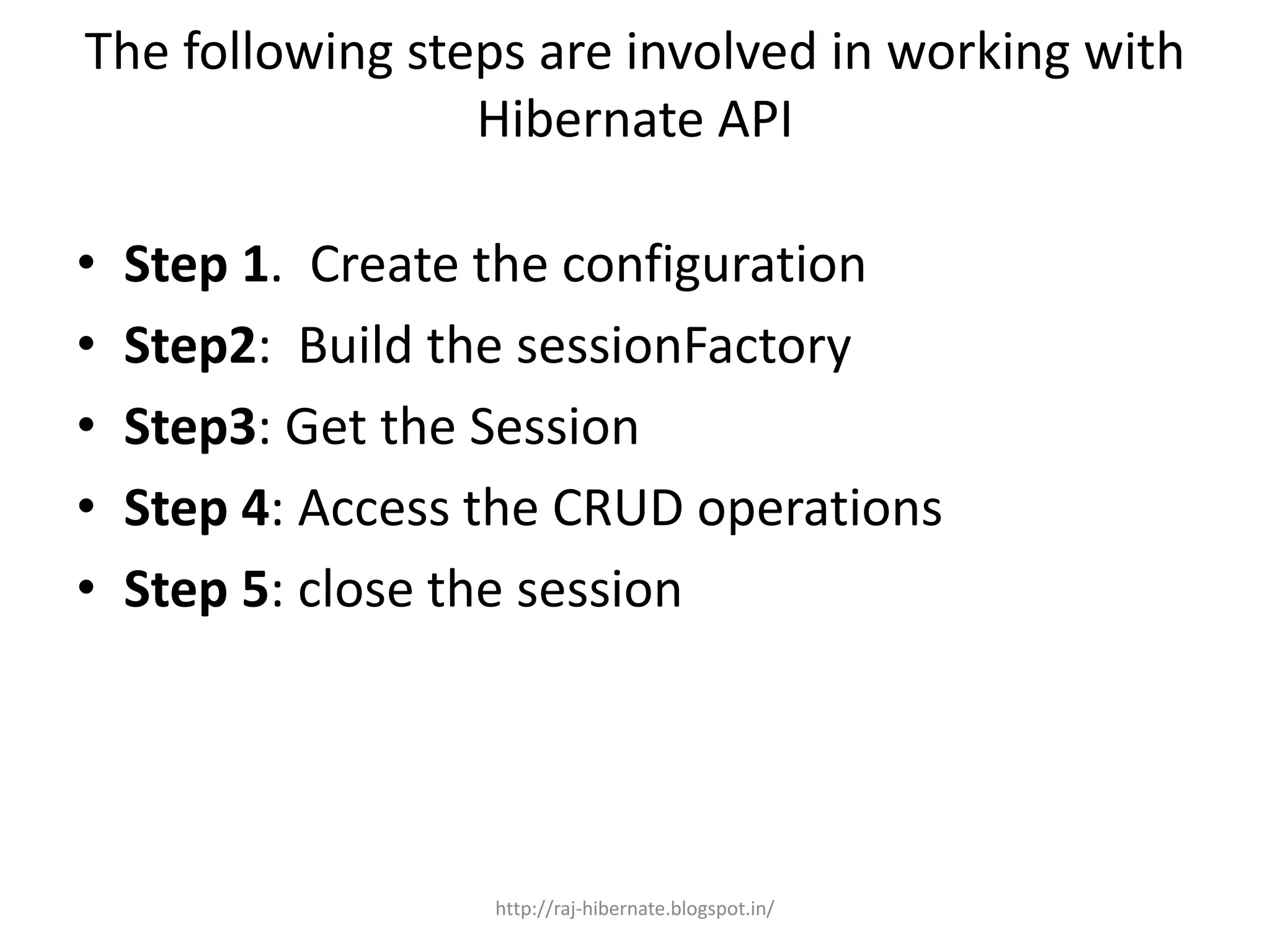
![HibernateTestCase.java
• //HibernateTestCase.java
• import com.st.dom.Employee;
• import org.hibernate.cfg.*;
• import org.hibernate.*;
• public class HibernateTestCase
• {
• public static void main(String args[])
• {
• // Step 1. Create the configuration
• Configuration cfg=new Configuration();
• cfg.configure();
• //Step2: Build the sessionFactory
• SessionFactory sf=cfg.buildSessionFactory();
• //Step3: Get the Session
• Session session=sf.openSession();
http://raj-hibernate.blogspot.in/](https://image.slidesharecdn.com/hibernateexample1-140729080120-phpapp02/75/Hibernate-example1-25-2048.jpg)

